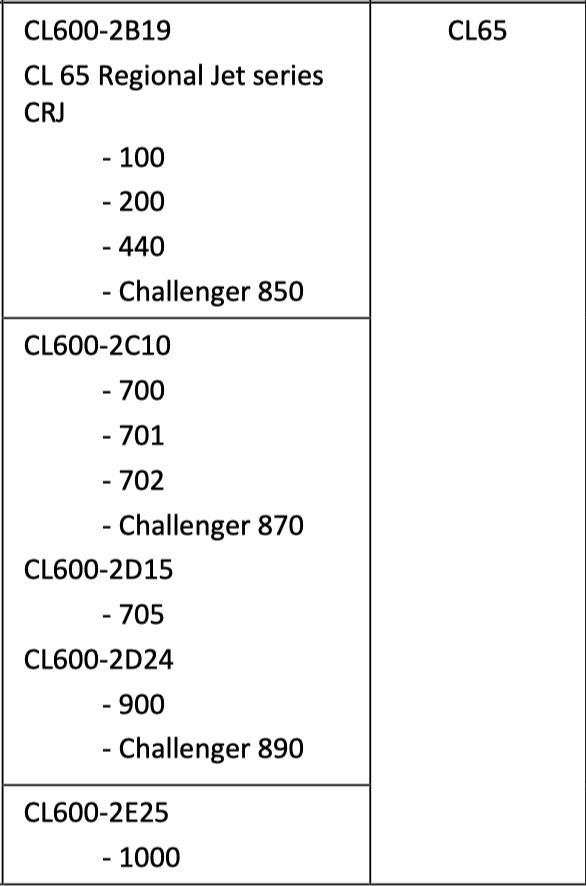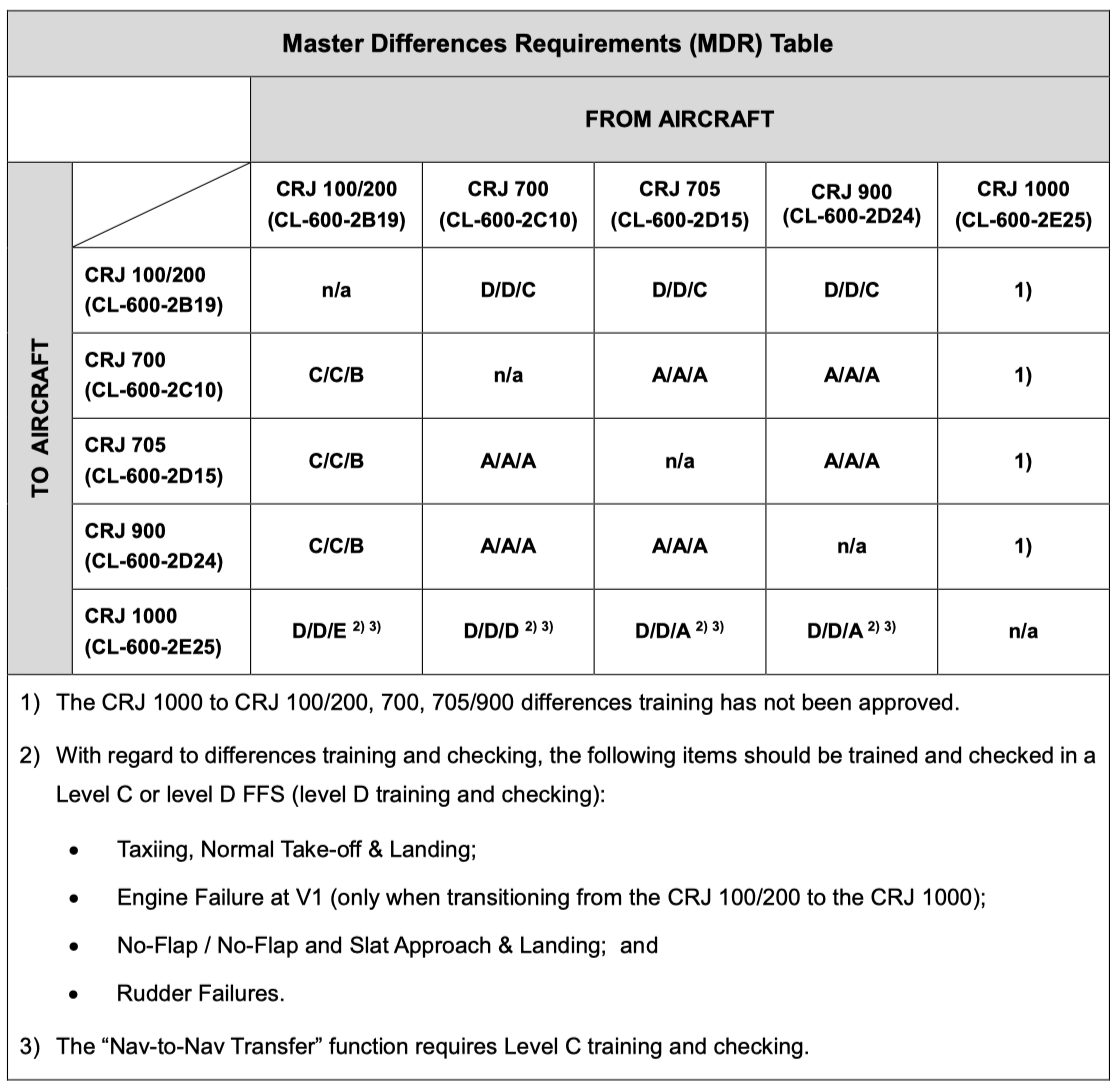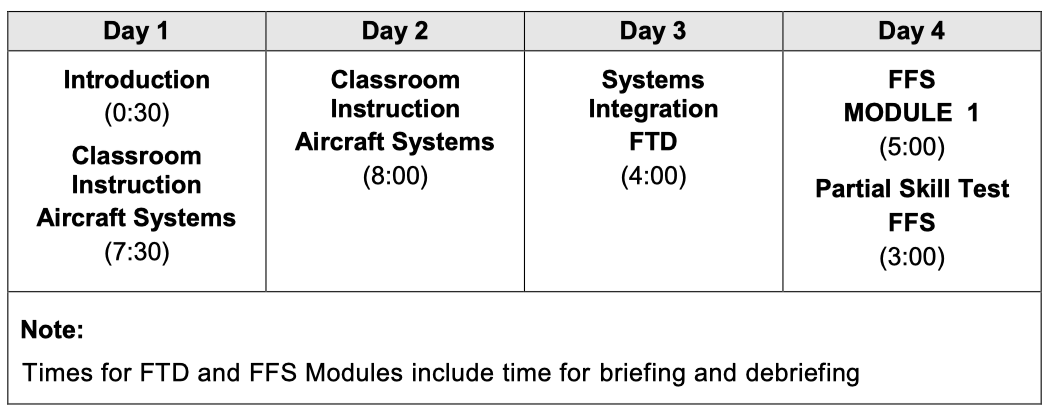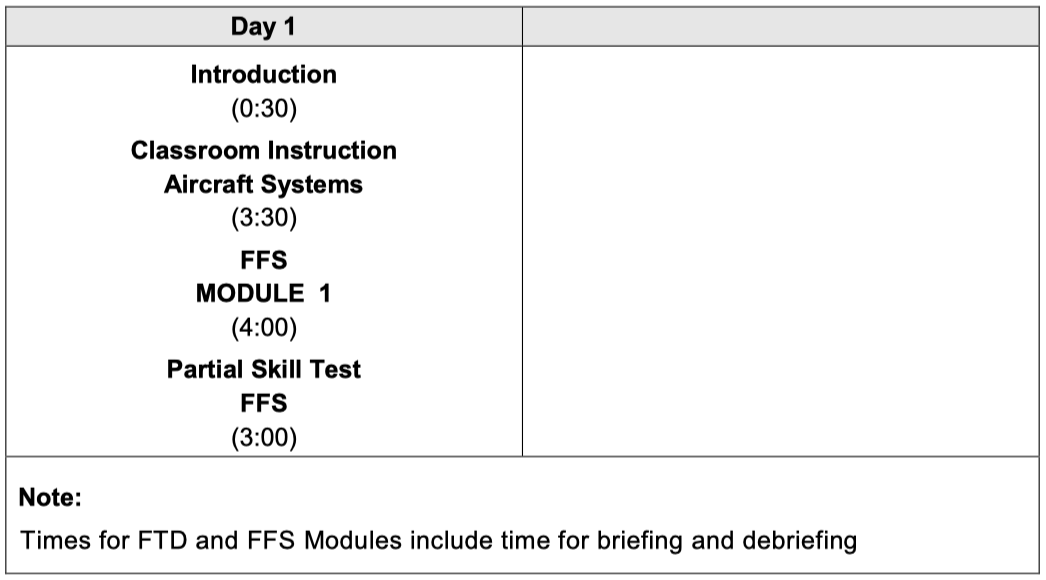Differences training Bombardier CRJ
The common license endorsement established by an EASA for purpose of the flight crew license is very simple - CL65. EASA typeratings and endorsment list includes following variants of regional airliners constituting into the single CL65 type rating:
- Bombardier CL65 – CRJ100/200
- Bombardier CL65 700/900
- Bombardier CL65 CRJ 1000
The CL65 type rating endorsement covers following business jets of Bombardier CL65:
- Challenger 850
- Challenger 870
- Challenger 890
The single CL65 type rating licence endorsement does not mean that its holder of the CL65 type rating can fly on all the above variants. When transition to another variant of the CL65, it is necessary to attend the so-called differences training. The duration depends on the differences level described and established in the EASA Operational Suitability Data CRJ Series.
On which CRJ I can fly... ✅
Upon the completion of the type rating training course you have to pass the checkride with EASA TRE CL65 or SFE CL65. Your CL65 typerating privileges are limited to the variant on which the skill test with the CL65 examiner was performed. To fly on another variant of the Bombardier CL65, differences training is required according to the difference levels among the CL65 variants. Those difference levels are established by an EASA OSD CRJ. Transitions between more complex variants of CRJ Series also require partial proficiency check with EASA TRE CL65.

Differences training to another CRJ variant
Differences training to another variant of the Bombardier CRJ model depends on the differences between the particular CL65 variants and the transition between them. EASA defines the differences and difference levels for each Bombardier CRJ variant.

If not otherwise described by EASA Operational suitability data following applies:
- CL65 variants in same cell - familiarization training
- CL65 variants in another cell - differences training
CL65 Differences training ✅
Differences training is aquistion of additional experience. It means the additional flying experience is required. This must be acquired in either flight simulator representing the variant of Bombardier CRJ Series or by attending the line training under supervision - LIFUS or by combination of both means. This kind of the training is applicable when the transition is done between the variants with significant differences - such as CRJ200 and CRJ900.
CL65 Familiarization training ✅
Familiarization training is acquistion of additional theoretical knowledge without the necessity of attending the additional flight training. This kind of training is usually done by selfstudy means such as CBT or class room instruction for the differences identified as Level A or Level B differences. Familiarization training is applicable for the less different variants such as CRJ700 to CRJ900.
Difference levels among CL65 variants
Differences Training from the CRJ 100/200 to the CRJ 700, and vice versa
The differences training from the CRJ 100 / CRJ 200 to the CRJ 700 requires Level C training using a CRJ 700 FTD Level II (or higher). Differences training from the CRJ 700 to the CRJ 100 / CRJ 200 requires Level D training using a CRJ 100 / CRJ 200 FTD Level II or higher.
Differences Training from the CRJ 100/200 to the CRJ 900, and vice versa
The differences training from the CRJ 100 / CRJ 200 to the CRJ 900 requires Level C training. Differences training from the CRJ 900 to the CRJ 100 / CRJ 200 requires Level D training using a CRJ100 / CRJ 200 FTD Level II or higher.
Familiarization Training from the CRJ 705 to the CRJ 900, and vice versa
The familiarization training from the CRJ 705 to the CRJ 900 and vice versa, requires Level A training.
Differences Training from either the CRJ 100/200, the CRJ 700, or the CRJ 705/900 to the CRJ 1000
Bombardier differences training from the CRJ 100/200, the CRJ 700 and the CRJ 705/900 to the CRJ 1000 was evaluated. With regard to differences training and checking, the following items must be trained and checked in the relevant Level C or D FFS (level D training and checking):
- Taxiing, Normal Take-off & Landing;
- Engine Failure at V1 (only when transitioning from the CRJ 100/200 to the CRJ 1000);
- No-Flap / No-Flap and Slat Approach & Landing; and
- Rudder Failures.
The “Nav-to-Nav Transfer” function requires Level C training and checking.
Training Areas of Special Emphasis (TASE)
Part-FCL, FCL.710(a) and FCL.725(a) address training requirements for type rating, differences and familiarization training to include the relevant elements as defined in the operational suitability evaluation. Part-ORO, ORO.FC.145(b) addresses operator requirements to include the relevant elements as defined in the operational suitability evaluation when establishing the training programmes and syllabi.
EASA OSD CRJ establishes following so-called Training Areas of Special Emphasis for CRJ 100 / CRJ 200 to CRJ 700 differences training:
- Pre-flight walk around (landing gear, door configuration, APU location, wings)
- Pitch during climb out and approach
- Engine failure during take-off
- ECS, APU and power management (FADEC)
- Approach to stall and recovery
- No Slat / No Flap & Slat / No Flap approaches
- Landing flare
With respect to the identified differences, it is usually necessary to complete the line training - LIFUS in commercial air transport. Its scope, duration and number of line sectors is usually always individual and is contained in the Operations Manual, Part D.
Differences training from CRJ100 to CRJ1000

Differences training CRJ700 to CRJ900

CRJ differences training validity
Differences training to another Bombardier CL65 variant is valid 2 years since the last flight on the particular CRJ variant. That is required by FCL.710(b). In case if you have not flown particular variant for more than 2 years, you will need an additional training.
--
Look for a reliable CRJ Series differences training provider. ProfiPilot Training is the professional flight school of your choice.

